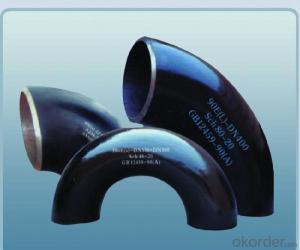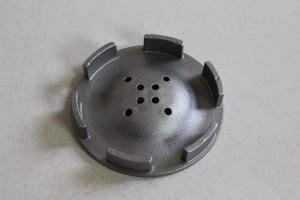Stainless Steel Structure
Stainless Steel Structure Related Searches
Best Paint For Stainless Steel Blanket Insulation For Steel Buildings Primer For Galvanized Steel Foam Filter For Stainless Steel H S Code For Stainless Steel Surface Grinding Wheels For Stainless Steel Surface Grinding Wheels For Hardened Steel Hole Saw For Stainless Steel Paint For Stainless Steel Stainless Steel For BbqHot Searches
Steel Mesh Panels For Sale Price For Stainless Steel Scrap Scrap Price For Stainless Steel Price For Stainless Steel Stainless Steel Tank For Sale Stainless Steel Sheets For Sale Cheap High Tea Sets For Sale Stainless Steel Tanks For Sale Stainless Steel For Sale High Density Fiberboard For Sale Solar Hot Water Collectors For Sale Scaffolding For Sale In Uae Scaffolding For Sale In Ireland Scaffolding For Sale In Houston Type Of Inverter For Solar Price Of Shipping Containers For Sale Types Of Inverter For Solar Stock Price For Aluminum Used Solar Inverter For Sale Steel Mesh Panels For SaleStainless Steel Structure Supplier & Manufacturer from China
Okorder.com is a professional Stainless Steel Structure supplier & manufacturer, offers integrated one-stop services including real-time quoting and online cargo tracking. We are funded by CNBM Group, a Fortune 500 enterprise and the largest Stainless Steel Structure firm in China.Hot Products
FAQ
- Stainless steel pipes perform exceptionally well in corrosive environments. Due to the presence of chromium in their composition, stainless steel pipes are highly resistant to corrosion and oxidation. This unique property makes them ideal for various applications where exposure to corrosive substances, such as acids, chemicals, and saltwater, is common. The chromium content in stainless steel forms a protective layer on the surface of the pipes, known as the passive layer. This passive layer acts as a shield against corrosive elements, preventing the underlying metal from being affected. This means that stainless steel pipes can withstand prolonged exposure to corrosive environments without deteriorating or losing their structural integrity. Furthermore, stainless steel pipes are also resistant to pitting corrosion, which occurs when localized damage to the passive layer leads to the formation of small pits or holes on the surface. This resistance to pitting corrosion makes stainless steel pipes highly reliable and long-lasting in corrosive environments. In addition to corrosion resistance, stainless steel pipes also offer other beneficial properties such as strength, durability, and high temperature resistance. These qualities make stainless steel pipes a preferred choice in various industries including chemical processing, oil and gas, marine, wastewater treatment, and many others. Overall, stainless steel pipes are known for their exceptional performance in corrosive environments. Their resistance to corrosion, pitting, and high temperatures, coupled with their durability and strength, make them a reliable and cost-effective choice for applications where protection against corrosion is crucial.
- Yes, stainless steel pipes are highly suitable for construction projects. They offer exceptional strength, durability, and corrosion resistance, making them an ideal choice for various applications in construction, including plumbing, HVAC systems, structural supports, and more. Stainless steel pipes also have excellent aesthetic appeal and can withstand harsh environmental conditions, making them a reliable and long-lasting option for construction projects.
- The heat transfer coefficient of stainless steel pipes can be calculated using empirical correlations or experimental measurements. Empirical correlations involve using equations that relate the heat transfer coefficient to parameters such as the flow rate, pipe diameter, and fluid properties. These correlations are often based on extensive experimental data and can provide reasonably accurate estimates. Alternatively, experimental measurements involve directly measuring the temperature difference across the pipe wall and the heat flux. By dividing the heat flux by the temperature difference, the heat transfer coefficient can be obtained. However, experimental measurements can be more time-consuming and may require specialized equipment.
- Yes, stainless steel pipes can handle high-velocity fluid flow. Stainless steel pipes are known for their excellent strength, durability, and resistance to corrosion. These properties make them suitable for handling high-velocity fluid flow, as they can withstand the pressure and turbulence generated by the fast-moving fluids. Additionally, stainless steel pipes have smooth inner surfaces, which minimize friction and help maintain the velocity of the fluid flow. Therefore, stainless steel pipes are commonly used in industries such as oil and gas, chemical processing, and power generation, where high-velocity fluid flow is often encountered.
- The main difference between 410 and 316 stainless steel pipes lies in their chemical composition and their intended applications. 410 stainless steel is a martensitic stainless steel, which means it has a high carbon content (between 0.15% and 0.25%) and a relatively low chromium content (between 11.5% and 13.5%). This composition gives 410 stainless steel pipes excellent strength, hardness, and wear resistance. It is often used in applications where corrosion resistance is not the primary concern, such as in cutting tools, knives, and firearm components. On the other hand, 316 stainless steel is an austenitic stainless steel with a higher chromium content (between 16% and 18%) and a significant amount of nickel (between 10% and 14%). This composition gives 316 stainless steel pipes excellent corrosion resistance, especially in environments with chlorides or other corrosive agents. It is widely used in industries such as chemical processing, pharmaceuticals, food processing, and marine applications. In summary, the main difference between 410 and 316 stainless steel pipes is their chemical composition and the resulting properties. 410 stainless steel offers superior strength and hardness but has lower corrosion resistance compared to 316 stainless steel, which is highly corrosion resistant but may have slightly lower strength and hardness. The choice between the two depends on the specific requirements of the application, with 410 stainless steel being more suitable for applications where strength and wear resistance are crucial, and 316 stainless steel being preferred for applications requiring excellent corrosion resistance.
- Yes, stainless steel pipes are generally resistant to high temperatures. Stainless steel is specifically designed to withstand high heat and maintain its structural integrity at elevated temperatures. The high chromium content in stainless steel forms a protective oxide layer on the surface, which helps to prevent corrosion and maintain its strength and durability even in extreme temperature conditions. This makes stainless steel pipes suitable for various applications that involve high temperatures such as industrial furnaces, heat exchangers, and exhaust systems. However, it is important to note that the specific resistance to high temperatures may vary depending on the grade and alloy of stainless steel used. Therefore, it is crucial to select the appropriate grade of stainless steel based on the specific temperature requirements of the application.
- Indeed, nuclear waste storage can make use of stainless steel pipes. Due to its exceptional resistance to corrosion, stainless steel proves to be an optimal material for the containment and transportation of dangerous substances like nuclear waste. The durability, strength, and capability to endure extreme temperatures of stainless steel render it apt for the prolonged storage of radioactive waste. Furthermore, stainless steel remains non-reactive and prevents the release of harmful substances, thus assuring the preservation of the stored waste's integrity. Nonetheless, it remains crucial to verify that the stainless steel utilized adheres to the specific requirements and standards established for nuclear waste storage to guarantee utmost safety and confinement.
- How thick is the 3 stainless steel tube?
- Refers to the stainless steel tube with a wall thickness of 3 mm.














































